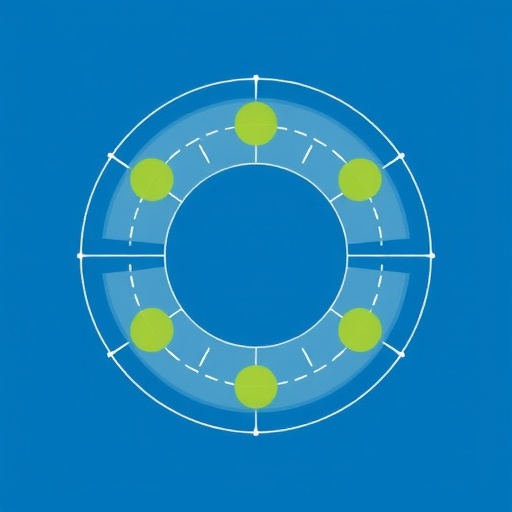In the relentless pursuit to safeguard our planet’s most precious resource—water—scientists have long grappled with the challenges of accurately monitoring and predicting water quality. A groundbreaking study by Fang, Deitch, and Gebremicael, soon to be published in Environmental Earth Sciences, ventures deep into this complex arena, shedding light on the comparative performance of data interpolation and machine learning techniques that are foundational to modern water quality management.
Water quality monitoring has traditionally involved direct sampling and laboratory analyses, yet such methods are often constrained by their temporal and spatial limitations. To bridge these gaps, computational techniques, including data interpolation and machine learning, have become indispensable. Fang and colleagues’ research seeks not merely to apply these methods but to evaluate their reliability within the context of the Soil and Water Assessment Tool (SWAT) model framework, a robust hydrological modeling system widely used for simulating water flow, sediment transport, and nutrient cycling across watersheds.
One of the core challenges in water quality modeling is how to manage incomplete or sparse datasets effectively. Data interpolation methods fill these gaps by estimating values at unsampled locations based on spatial and temporal correlations present in observed data. Conversely, machine learning algorithms employ data-driven approaches, often capturing complex, nonlinear relationships that traditional interpolation might overlook. This study rigorously compares these methodologies, focusing on their fidelity and predictive power when integrated with SWAT outputs.
The authors constructed a comprehensive experimental design leveraging multiple datasets derived from varied river basins, ensuring a diversity of hydroclimatic and land-use settings. By applying both interpolation and several machine learning models—including random forests, support vector machines, and gradient boosting techniques—they meticulously assessed how each method reconstructed water quality parameters such as nutrient concentrations, biological oxygen demand, and sediment loads.
A significant finding from the investigation is that while data interpolation methods perform reasonably well under conditions of dense and regularly spaced sampling, their reliability markedly deteriorates in scenarios with sparse or irregular data. In contrast, machine learning approaches, especially ensemble-based models, demonstrated a pronounced ability to capture complex spatiotemporal dynamics, outperforming interpolation methods in predictive accuracy. This observation underscores the potential of AI-based tools in revolutionizing environmental modeling.
However, the study also illuminates critical caveats. Machine learning models demand abundant and high-quality training data to generalize effectively, which is not always feasible in under-monitored regions. Furthermore, these models often operate as "black boxes," limiting interpretability by practitioners and stakeholders who must translate model outputs into actionable water management strategies. The researchers advocate for hybrid approaches that synergize the interpretability of interpolation techniques with the predictive prowess of machine learning.
By integrating these methods within the SWAT modeling environment, the study offers valuable insights into calibrating and validating hydrological models under varying data conditions. Notably, the researchers emphasize that improving model input data quality remains paramount, as even the most sophisticated algorithms cannot compensate for fundamentally flawed or biased datasets. This reiterates the longstanding principle that computational models must complement — not replace — comprehensive field monitoring.
A particularly novel aspect of the study is its nuanced treatment of uncertainty quantification. Recognizing that both data interpolation and machine learning possess intrinsic errors, the researchers employed probabilistic frameworks to quantify confidence intervals around predicted water quality indices. This probabilistic lens provides decision-makers with clearer risk assessments, a crucial step toward implementing risk-informed water management policies amid escalating environmental variability.
Furthermore, Fang and colleagues illustrate how their comparative framework can be adapted to forecast responses to watershed disturbance scenarios such as urbanization, agricultural intensification, or climate change. By simulating these perturbations within the SWAT model and processing outputs through optimized data-driven methods, stakeholders gain foresight into potential water quality trajectories, enabling preventive mitigation efforts.
The findings have profound implications for future environmental monitoring paradigms. They suggest a strategic shift toward integrated sensor networks combined with advanced computational algorithms, capable of delivering near-real-time water quality assessments with high spatial resolution. Such developments could transform water resource governance, enhancing responsiveness to pollution events and supporting sustainable watershed management practices globally.
This research also resonates with the emerging trend of employing explainable AI in environmental sciences. As public and regulatory bodies increasingly demand transparency in algorithmic decision-making, reconciling model complexity with interpretability remains a focal challenge. Through thorough evaluations like this, the scientific community moves closer to demystifying AI applications and fostering trust among diverse stakeholders.
In conclusion, the work by Fang, Deitch, and Gebremicael marks a seminal step in advancing water quality management science. Their methodical comparison elucidates the strengths and limitations of prevalent computational approaches within widely adopted modeling frameworks. This knowledge equips environmental scientists, engineers, and policymakers with the tools necessary for making informed decisions in the face of data scarcity and environmental uncertainty.
As water bodies continue to be threatened by a burgeoning global population, climate disruptions, and land-use changes, innovative modeling and data analysis techniques become indispensable. This study not only bridges methodological gaps but also lays a foundation for future interdisciplinary collaborations aiming to safeguard water quality and, by extension, ecosystem and human health.
By championing a careful, data-informed approach to employing machine learning and interpolation methods, this research reaffirms the quintessential role of robust scientific evaluation in environmental stewardship. The convergence of hydrological modeling, AI, and uncertainty quantification presented here exemplifies how technology empowers us towards a more sustainable and resilient watery world.
Subject of Research: Evaluation of data interpolation and machine learning methods for improving water quality management through the SWAT model.
Article Title: Evaluating the reliability of data interpolation and machine learning methods for water quality management: a SWAT model comparison.
Article References:
Fang, S., Deitch, M.J. & Gebremicael, T.G. Evaluating the reliability of data interpolation and machine learning methods for water quality management: a SWAT model comparison. Environ Earth Sci 84, 274 (2025). https://doi.org/10.1007/s12665-025-12313-1
Image Credits: AI Generated




